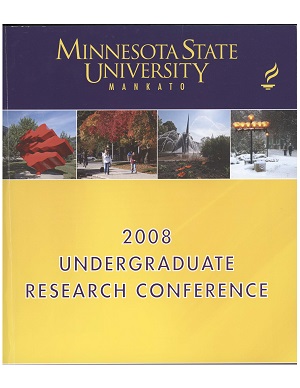Pushing the Limits of Clay: Sculpting with Ceramic Glaze
Location
CSU 201
Start Date
21-4-2008 8:00 AM
End Date
21-4-2008 9:45 AM
Student's Major
Art
Student's College
Arts and Humanities
Mentor's Name
Todd Shanafelt
Mentor's Department
Art
Mentor's College
Arts and Humanities
Description
This project expands the threshold of traditional ceramic thought by combining the plasticity of clay with the low melting temperature of glaze in order to blur distinctions usually made between clay and glaze. This allows manipulation of glaze as if it was clay. The purpose of this project was to broaden the available color palette and to push the size limitations of the work while exploring of the aesthetic created by sculpting with glaze. Both clay and glaze melt in the kiln; however, the temperature at which they melt sets them apart. At firing temperature, clay melts only enough to become hardened and dense through a process called vitrification, whereas glaze surpasses vitrification to enter into a fully liquid state. Making it possible to pinch and mold clay, alumina particles have a large surface area and tend to cling to each other when in contact with water. Due to its lack of alumina, glaze, when made into a clay-like paste, is virtually not moldable at all. Thus, the traits of both clay and glaze create malleable glaze. Sculpting with glaze establishes a unique unity of process allowing the kiln to influence form. The kiln is no longer just a tool to harden objects; in fact, it is now a necessary process in creating a certain aesthetic. The melting process of the glaze creates a sculpture frozen in motion referencing organic growth. Producing larger work opened up new possibilities in shape and a larger color palette allowed more visually interesting pieces.
Pushing the Limits of Clay: Sculpting with Ceramic Glaze
CSU 201
This project expands the threshold of traditional ceramic thought by combining the plasticity of clay with the low melting temperature of glaze in order to blur distinctions usually made between clay and glaze. This allows manipulation of glaze as if it was clay. The purpose of this project was to broaden the available color palette and to push the size limitations of the work while exploring of the aesthetic created by sculpting with glaze. Both clay and glaze melt in the kiln; however, the temperature at which they melt sets them apart. At firing temperature, clay melts only enough to become hardened and dense through a process called vitrification, whereas glaze surpasses vitrification to enter into a fully liquid state. Making it possible to pinch and mold clay, alumina particles have a large surface area and tend to cling to each other when in contact with water. Due to its lack of alumina, glaze, when made into a clay-like paste, is virtually not moldable at all. Thus, the traits of both clay and glaze create malleable glaze. Sculpting with glaze establishes a unique unity of process allowing the kiln to influence form. The kiln is no longer just a tool to harden objects; in fact, it is now a necessary process in creating a certain aesthetic. The melting process of the glaze creates a sculpture frozen in motion referencing organic growth. Producing larger work opened up new possibilities in shape and a larger color palette allowed more visually interesting pieces.
Recommended Citation
Gunderson, Chad. "Pushing the Limits of Clay: Sculpting with Ceramic Glaze." Undergraduate Research Symposium, Mankato, MN, April 21, 2008.
https://cornerstone.lib.mnsu.edu/urs/2008/oral-session-01/5



